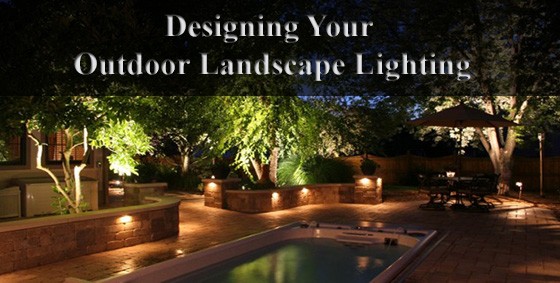
Outdoor lighting is about far more than just safety and security. There is no reason that your curb appeal should be limited to the daytime. In fact, landscape lighting is a part of a new trend for 2016. All the beautiful landscaping features that you have spent your time, energy and money on should be admired both day and night! Here’s a few things to consider:
Low Voltage Outdoor Lighting
The electricity that runs into your home holds potentially dangerous 120 volts. To create a lower voltage outdoor lighting, you will need to install one or more transformers. This will reduce the voltage of your outdoor landscape lighting to a tame 12 volts. This is very important because if you’re wiring gets exposed by the weather and the abuse of the elements, this voltage will not pose any danger to you, your family or your pets.
There is a downside to having a lower voltage… The further the light fixture is from the transformer, the dimmer the light becomes. If this becomes a problem, there are a number of easy solutions such as upgrading to a higher-rated transformer or a heavier-gauge cable. You can use multiple transformers or you can simply reduce the number or wattage of your light fixtures. Moving the transformer or rearranging the layout of the lighting system can reduce the cable length to each fixture might also fix the problem. If none of these things seem appealing, you could also consider using the dimming as an intentional effect. This is popular in path lighting, where each light fixture gets stronger as you move closer to your home.
Design and Installation
Deciding what you want your lighting to do is the first step when choosing and designing your lighting system. You will need to consider the convenience and safety of entering your home at night, adding night time curb appeal to your home and simply creating a romantic mood for your landscaping. There are three main categories to lighting, but many different lighting designs – some even use a combination of all three.
Path Lighting
This category focuses on using fixtures to light your paths and walkways. The primary goal is safety but this lighting is still aesthetically pleasing.
Accent Lighting
This category focuses on lighting a specific object or landscaping feature. It still allows for peripheral lighting and dim illumination of surrounding areas. This design allows for curb appeal but emphasizes individual areas like a tree or garden.
Spread Lighting
This category focuses on spreading light among your outdoor landscape and creates a more general mood. Certain areas will still be emphasized but generally it isn’t focused around a single feature like the first two lighting categories.
What type of lighting do you use in your landscaping?






Leave a Reply